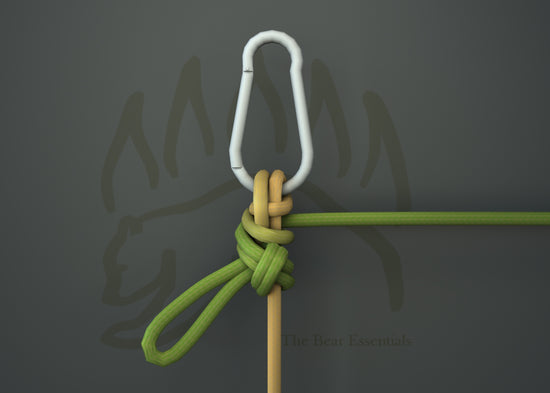How to Tie the Munter Mule
Usage
The Munter Mule is commonly used to lock off a Munter Hitch for hands-free belaying or rappelling in climbing and search and rescue. It combines the Munter’s simplicity with a quick-release mule knot, making it ideal for temporary holds. Its secure lock-off is valued, but it can twist ropes like the standard Munter.
Why Learn the Munter Mule?
The Munter Mule is a must for climbers and rescuers needing quick, secure tie-offs. Its lock-off design ensures safe, hands-free rope management, while its quick-release feature makes it ideal for emergencies.
Common Uses
-
Climbing:
- Locks off belay systems for hands-free rest or rescue.
- Secures ropes during rappelling for safe pauses.
-
Search and Rescue:
- Holds ropes in high-angle operations for load adjustments.
- Facilitates temporary tie-offs in hauling or lowering systems.
ABOK Number
(Ashley Book of Knots)
Other Names
Category
|
Notable Features
- Quick Lock-Off: Secures the Munter Hitch for hands-free operation.
- Easy Release: Unties with a single pull, even after load.
- Versatile: Works for belaying, rappelling, or rescue systems.
- Minimal Gear: Ties on a carabiner, no extra cord required.
- Trusted in Emergencies: Standard for temporary holds in critical scenarios.
Variations
(No true variations listed; for added security, you can add a second overhand knot on the brake strand, though this may slow release.)
Similar Knots
Munter Hitch vs. Munter Mule
- Pros: Simpler and faster to tie for basic friction control.
- Cons: Lacks the lock-off feature for hands-free operation.
Prusik Hitch vs. Munter Mule
- Pros: Stronger grip for ascending and adjustable with a cord loop.
- Cons: Requires extra cord and is slower to set up than the Munter Mule.
History
The Munter Mule builds on the Munter Hitch, developed by Swiss climber Werner Munter for mountaineering. While not explicitly listed in The Ashley Book of Knots, it evolved from the Munter Hitch (#1816) by adding a mule knot for lock-off, likely in climbing and rescue contexts. Its use in modern search and rescue and climbing reflects its reliability for secure, temporary tie-offs in dynamic scenarios.
Security Level
The Munter Mule provides reliable lock-off for belaying and rappelling when tied correctly on a locking carabiner, holding firm under moderate to heavy loads. The mule knot ensures hands-free security, but rope twisting may occur. For prolonged use, inspect the rope for abrasion, as the hitch can cause wear.
Downsides
- Rope twisting: May kink ropes during extended use, like the Munter Hitch.
- Rope wear: Can abrade ropes with heavy or repeated loading.
Structure
- Tie a Munter Hitch on a locking carabiner by passing the rope through, twisting once, and clipping the loop back.
- Pull the brake strand to set the Munter Hitch, ensuring proper friction.
- With the brake strand, form a small loop near the carabiner.
- Pass a bight of the brake strand through the loop and pull to create a mule knot.
- Secure the mule knot with an overhand knot or clip the bight to the carabiner for quick release.
Pro Tip: Use a pear-shaped carabiner for smoother rope movement and better control. Keep the mule knot close to the carabiner to minimize slippage.
FAQ
Is the Munter Mule strong enough for rescue operations?
Yes, it’s reliable for temporary lock-offs in high-angle rescues when tied properly.
What’s the best carabiner for the Munter Mule?
A pear-shaped, locking carabiner ensures smooth rope movement and secure attachment.
How does the Munter Mule compare to the Munter Hitch?
The Munter Mule adds a lock-off for hands-free use, while the Munter is simpler but less secure for pauses.
Can the Munter Mule be used without a belay device?
Yes, it’s a great backup for belaying or rappelling when devices are unavailable.
Why choose the Munter Mule over a Prusik Hitch?
It’s faster to tie, requires no extra cord, and offers quick release for temporary holds.
Important Notes on Safety
Common failure points include a loose mule knot or incorrect Munter Hitch setup. Always verify the hitch and lock-off are secure and the carabiner is locked before loading. Check the carabiner for wear or damage before tying. Ensure the mule knot is tight and close to the carabiner. Practice tying and releasing in controlled settings first.

